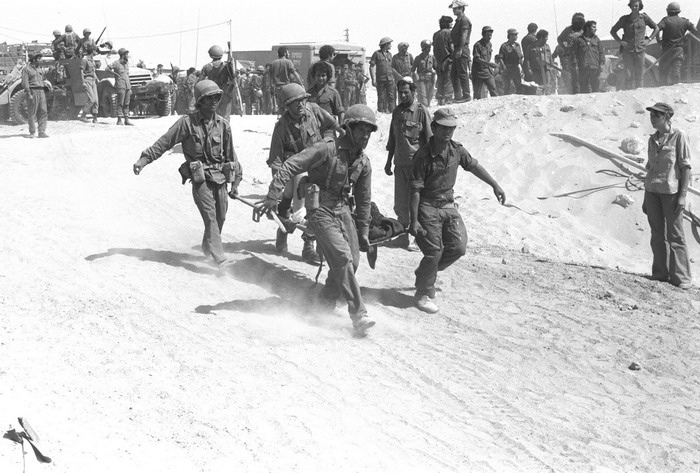Israelis have been remembering the date, October 6, 1973, the day on which the Yom Kippur War broke out, for exactly 35 years to date. Each year, Israeli news networks and websites recount and examine the historic war where thousands of Israeli soldiers were killed in the unprecedented attack by Egyptian and Syrian armies on the holiest day of the Jewish year.
As a Jewish state among 22 Arab nations, many of whom refuse to recognize Israel as a legitimate Jewish state, war and violent hostilities are a reoccurring reality. But it is the Yom Kippur War that perhaps reaches the toughened conscience of the Israeli public more strongly than any other war to date.
There are several explanations for this phenomenon including the fact that Israel’s heightened shock at the level of surprise involved with the attack, stemmed from the lasting euphoric state of the Six Day War that took place six years before. However, it is important to note that the Syrian and Egyptian armies had strategically planned and coordinated this attack with the active support of at least nine other Arab states-on both a financial and military scale.
By the third day of the Yom Kippur War, the skies above the Golan Heights were dotted with Iraqi MiGs, fighter aircrafts designed in the Soviet Union. Iraq also sent a squadron of Hunter jets to Egypt and several hundred tanks, which were deployed to the central Golan, attacking Israeli positions by mid-October.
Saudi Arabia and Kuwait financially supported the war and also sent their own men to fight. Approximately 3,000 Saudi Arabian troops were dispatched to Syria. Libya’s president Muammr Qaddafi gave Cairo more than $1 billion in aid to rearm Egypt and pay for Soviet weapons before the war began. During the Yom Kippur War, Libya sent Mirage fighters, French-made weapons, to Egypt.
Other North African countries that helped aid the war effort included Algeria who sent 150 tanks and three aircraft squadrons of fighters and bombers. In addition, Morocco, Tunisia, and Sudan sent troops to battle in the southern and northern fronts of Egypt and Syria. Although the involvement of these countries was more symbolic than anything else, their will and desire to damage Israel’s standing was clearly not.
Furthermore, Lebanon allowed Palestinian terrorists to operate on Lebanese territory in order to shell civilian settlements in Israel, and also provided radar units to the Syrian air defense forces. Jordan, although not a key player in the war, also provided military units along with tanks to the frontlines in Syria.
It is no wonder then that October 6 is a national holiday in Egypt and Syria known as Armed Forces Day. The Yom Kippur War is celebrated as a day of victory in Egypt. A principal bridge in Cairo and even an Egyptian city both boast the name 6th of October. In the rest of the Arab world, the war is known as Ramadan War or October War because the war broke out on the 10th day of Ramadan. Indeed, the Yom Kippur War, was probably one of the few historic instances were such a large number of Arab and Muslim countries united together on the battlefield– in order to destroy another non-Muslim nation.
Although Israel was able to eventually fend off the opposing forces and secure her borders, it did so paying a heavy price. Close to 2, 700 Israeli soldiers were killed and over 7, 000 wounded.
TODAY, although the reality of the Middle East may be slightly different in regard to Israel’s relations with the Arab nations surrounding her, the security of Israeli residents still remains under serious threat. Conventional warfare has been replaced by Palestinian terrorist operations and other forms of terror combat.
For the past eight years, the residents of Sderot and the western Negev, have suffered from 8, 000 exploding Qassam rockets on homes, businesses and communities. Over 600 Israelis in the region have been injured and thousands psychologically traumatized. Kibbutzim and communities bordering the Gaza border are under constant Palestinian mortar and sniper fire. Before the ceasefire went into effect, Ashkelon, a city of 100,000 Israelis experienced its share of Iranian-made Katyusha rockets fired from Gaza. The southern region of Israel, is a continued target for rocket terrorism coming from Hamas-controlled Gaza.
Let us not forget Jerusalem, Dimona, and other Israeli cities that have been targeted by Palestinian terrorists the past year. Israelis may do a fine job remembering past wars but we cannot forget the present climate in which we live in nor the threat that the Islamic jihadists of Gaza and Hizbullah in the north continue to pose.
Remembering the Yom Kippur War









